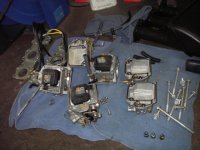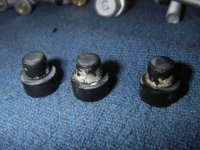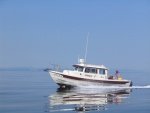Nearing 15 years on my boat, 1800 hours, and only once -- when I first bought it and didn't really know how long it had been parked -- that I had carb issues, rough running, poor idling, and dying when throttling up. Had to have the carbs, (all 6 -- twin 40 Yamis), cleaned and rebuilt.
The Yamaha certified mechanic explained it simple. "Use any gas you want, park it any time you want for as long as you want, Just plan on bringing it in every Spring for the whole clean and rebuild process again. Easy. OR Use STABIL anytime you are leaving the boat to sit." He also added that Startron was recommended.
That was before the Stabil 360 was around but not long after the Blue (Marine) version was introduced.
I don't use the Stabil with every fill, only the last one of the trip. The Startron is added when I fill at someplace that doesn't look like they move their fuel through very fast, (some of the marinas up north, or some road stations, or if it is E-10 fuel). The Ring Free has been reformulated and now includes fuel stabilizer. A note on the RingFree: It appears to turn the oil dark early on in the use cycle. I had dark oil, after using it, took it in to get it checked, and again in less than 20 hours the oil is dark again. Both engines, same result. I did learn previously that the ring free does clean the cylinders and so that is to be expected.
Also note, Automotive engines will have issues with E-10 if they are older than about 2005, when it was mandated to start using it and they started re specing fuel system hose and gaskets and fittings. Marine (outboard) engines are way behind in that design process. E-15 will eat our outboards. There are reasons BoatUS has been opposing Ethanol for marine fuels for years. I agree with Bob, It is not the farmers, they are growing crops. It is the government that is turning there crops into outboard wrecking fluid.
The following are from the rebuild. The engine had just under 80 hours on it and it sat for 6-10 months, from paring until I got it and took it out, Tried to.



Harvey
SleepyC :moon




